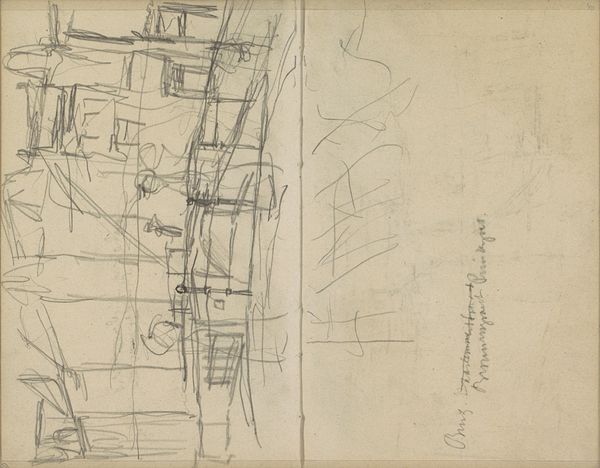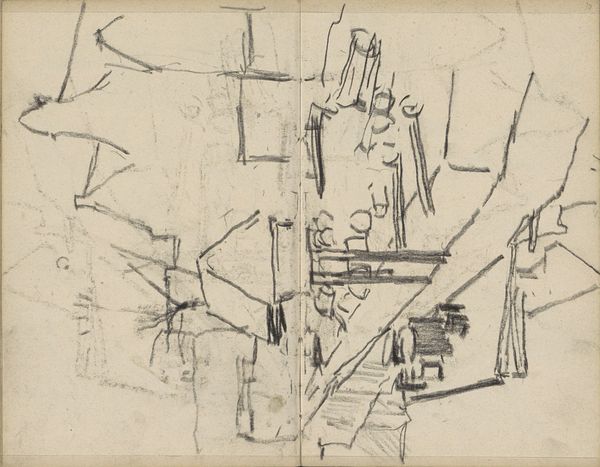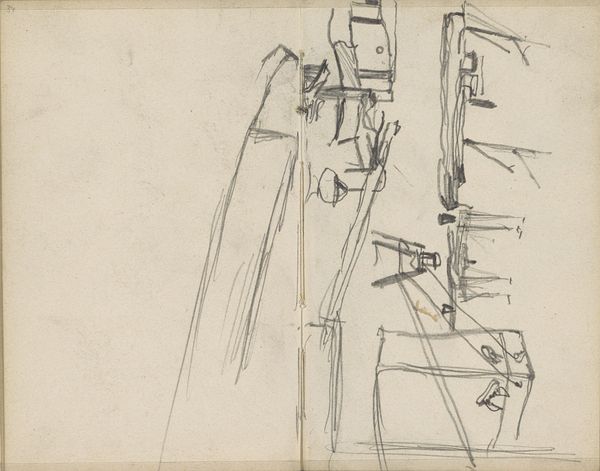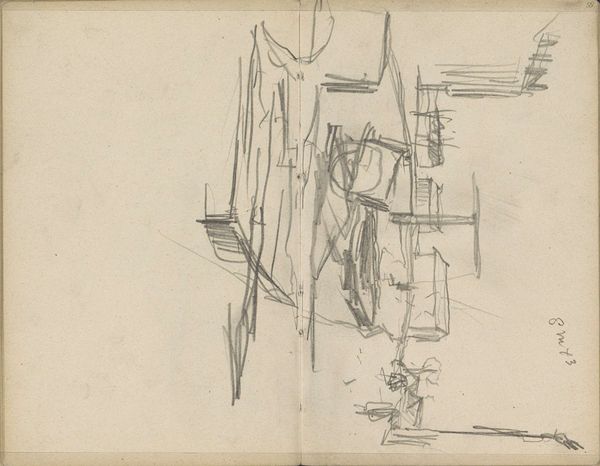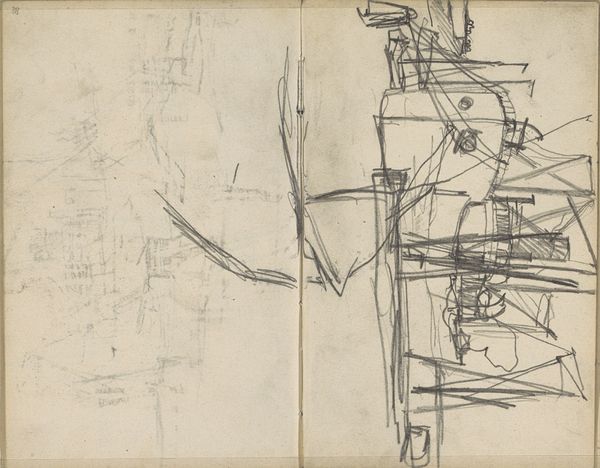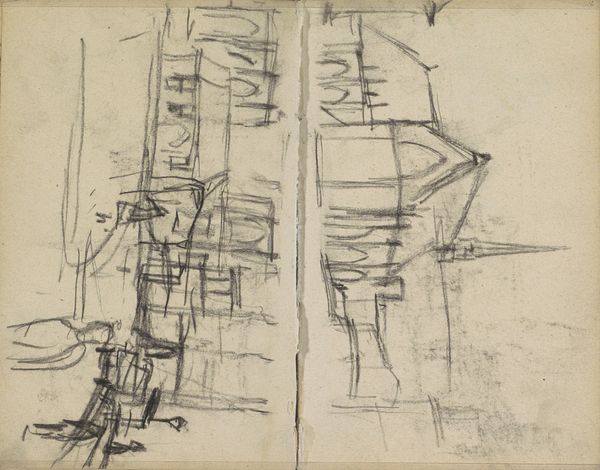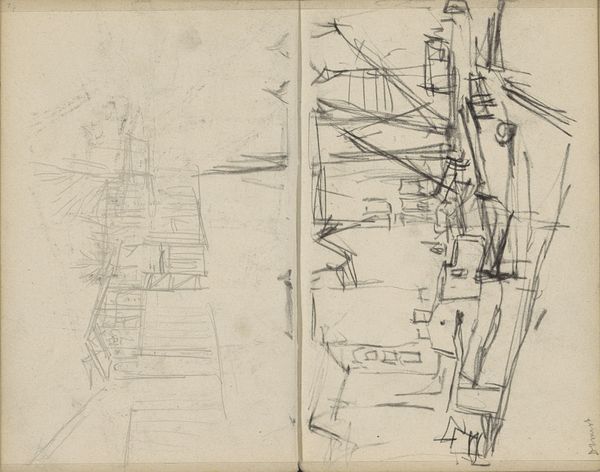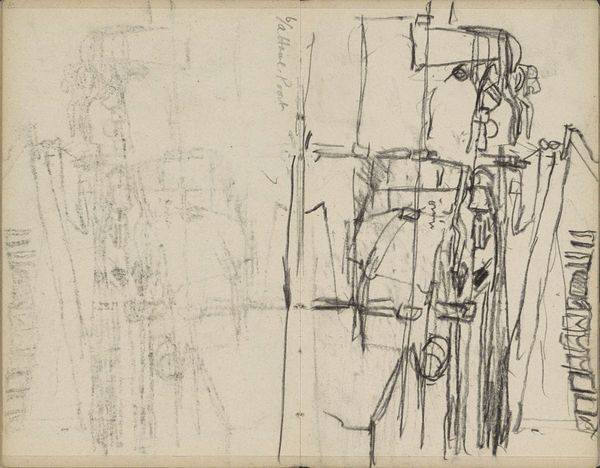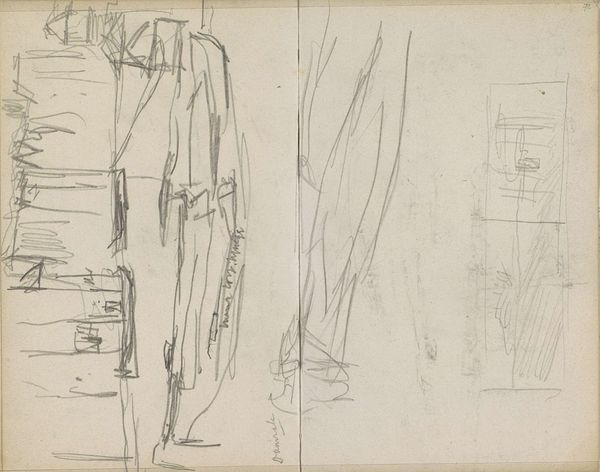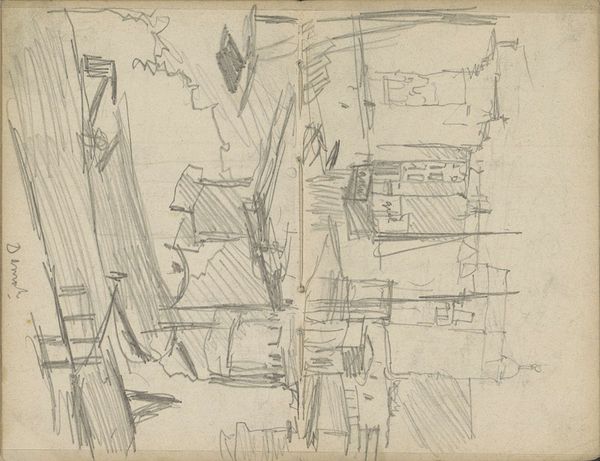
Stoomboot op het IJ ter hoogte van de Barentszkade te Amsterdam c. 1892 - 1923
0:00
0:00
georgehendrikbreitner
Rijksmuseum
Copyright: Rijks Museum: Open Domain
Curator: This sketch by George Hendrik Breitner, titled "Stoomboot op het IJ ter hoogte van de Barentszkade te Amsterdam," dates from around 1892 to 1923. It is currently held at the Rijksmuseum. Editor: Immediately striking is its raw, unfinished quality. The lines, scribbled and overlapping, create a dynamic sense of movement, albeit a bit chaotic. Curator: Indeed. Breitner, aligned with the Impressionist movement, favored capturing fleeting moments and immediate sensations. We see that clearly in the restless linework. Notice how he uses varied pencil and ink pressures. This, to my eyes, emphasizes particular structural elements within the industrial landscape and helps express spatial depth in what might otherwise be read as an indistinct compilation of marks. Editor: Precisely. These sketches offer insights into the industrialized Amsterdam waterfront through a decidedly individualistic lens. They record not only objects and architectural form, but also how steam power began reshaping social landscapes and networks, creating bustling ports and altering ways of life for countless individuals at a time of colonial expansion and massive trade. Curator: You highlight its documentary dimension, which is undeniably present, however, note that these pages were sourced from his sketchbooks. That gives us reason to interpret its documentary nature cautiously. We can only speculate whether they reflect any interest in political advocacy, or more simply a pragmatic need to establish studies for further studio pictures. Editor: A crucial reminder about the biases and subjectivity implicit in artistic documentation. Even something as ostensibly straightforward as a sketch can represent an intricate meshwork of power, intent, and perspective. How does Breitner's background shape this particular portrayal of the steamboat within Amsterdam's industrial fabric? Curator: This inquiry circles back to the essence of formalism. Breitner’s artistic choices and arrangements impact a viewer. From our modern perspectives we interpret the content from social, industrial and political structures, but those elements depend on an awareness of structure—an intentional ordering of elements by the artist, so that each form contributes to the whole of experience. Editor: So we see both the immediacy of lived experience through artistic gestures, and the enduring power of infrastructure to restructure those same realities across space and time. Thank you for expanding my understanding of the aesthetic politics presented in this wonderful sketch!
Comments
No comments
Be the first to comment and join the conversation on the ultimate creative platform.

